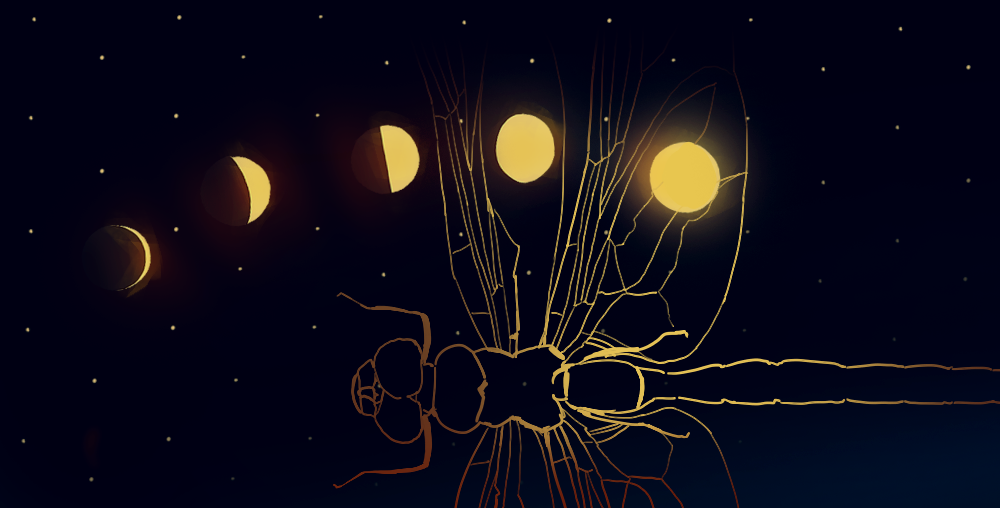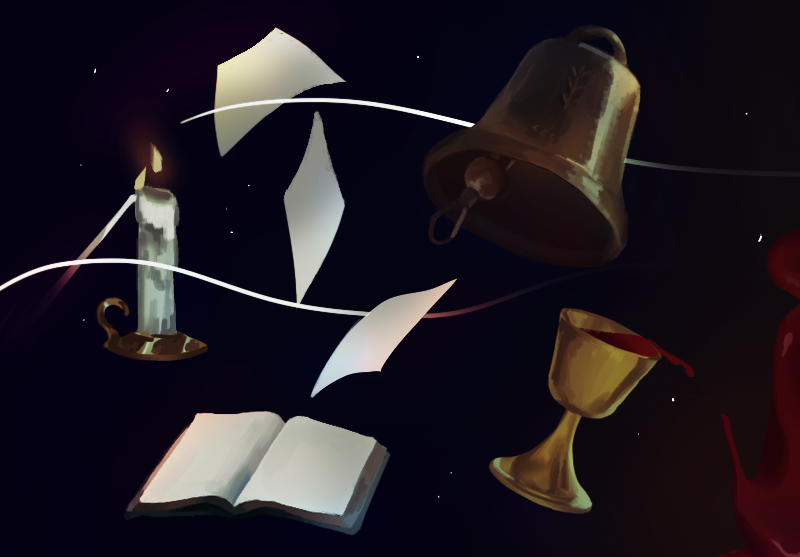The reasons to be enamored of the late poet Frank Stanford are endless. Stanford, who was born in Mississippi, lived in Memphis, and settled in western Arkansas (as much as he could ever “settle”), became a poet’s poet, a writer whose prolific output never penetrated beyond the small stable of writers and critics who wildly admired him. John Berryman, Alan Dugan, Allen Ginsberg, and Gordon Lish were fans. Given up by his biological mother at birth (in 1948), adopted by the first single woman authorized to adopt a child in Mississippi (Dorothy Gildart), and a frequent denizen of the levee camps where his later adoptive father (Albert Franklin Stanford in 1952) worked as an engineer, Stanford merged memory and fantasy to develop an iconic style that, as he published routinely throughout the 1970s, is best grasped in his defining The Battlefield Where the Moon Says I Love You. When his editor, Michael Cuddihy, first read this manuscript, he recalled, “It was endless, shot through with brilliant passages echoing Beowulf, Dante, the Troubadours, and others.” Stanford said he started writing it when he was 13.
Perhaps inevitably, though, admiration for Stanford often began with the body. His wife said his eyes were “soft to the point of bovine;” a lover called him “handsome as the sun” (before calling him the biggest liar she’d ever met); a male acquaintance noted “his boundless physical strength.” His friend and publisher Irv Broughton called him “dark and intense.” In photos, “Frankie,” as his niece, Carrie Prycock calls him, kind of smolders. People were naturally drawn to the handsome poet from Arkansas, eager to consume a man whose “hormonal literary excesses” — that’s from the editor of his works Michael Wiegers — always seemed on the verge of flash flooding the reality he transformed.
If the gush of Southern poetry that Stanford wrote was once scattered, most of it came together in Copper Canyon Press’s 2015 release of What About This: Collected Poems of Frank Stanford. “Even his failures hold jaw-dropping lines,” remarked Wiegers in that volume’s introduction. Mostly what was left on the page — Stanford typically edited his work way back from the original outburst — was flush with unrefined originality. “I invade the gutter and Louvre” . . . “in a bed as broad as a battlefield” . . . “tonight the sea is like a black mirror I watch in my sleep” . . . “Baby one night somebody/going to strike a match on a tombstone/And read your name” . . . “I for one leave the transcendence of language to the auctioneers” — open any page of Stanford’s work and there’s your small gift. It’s a talent that defies overstatement, even if he still remains largely unknown.
Stanford’s poems thrive on the themes of death, race, rural life, memory, and the moon — always the moon. His poems have earned him comparisons to Rimbaud and Whitman (all too easy in my opinion, but still . . .), and his response to the local cohort around Fayetteville who noticed him was to deliver himself back to them cloaked in a mythical epic, if only by writing more, more violently, more beautifully. In one of the best essays to be written on Stanford, poet and University of Southern California professor Anna Journey reminds us how “he was a committed self mythologizer.” And that’s exactly right. Mapping the external landscape during the day as a surveyor, he demystified an internal Ozarkian world at night, often all night, with Frank the poet as the dark prophet of beautiful doom. The whole act was beyond imitation. When she ran summer poetry workshops from her home in Cambridge, Massachusetts in the early 2000s, the late poet Lucy Brock-Broido handed her students a self-compiled book of hundreds of poems. Above two, and only two, she wrote in longhand, “DO NOT TRY THIS AT HOME.” They were Stanford’s poems “Lost Recipe” and “A Woman Driving a Stake in the Ground at Midnight.”
But when it comes to the deeper mystery that is Frank Stanford, his death stands out. He killed himself on June 3, 1978. Walked right into a bedroom at 705 Jackson Dr., in Fayetteville, and, with his wife (painter Ginny Stanford) and lover (poet C.D. Wright) in the next room, put three bullets from a .22 into his chest. To his friends, as well as those who have since tried to understand this tragedy, Stanford left few hints that this “irreversible cliché,” as his friend and fellow poet Thomas Lux put it in “Elegy for Frank Stanford,” was coming. He had spent the previous two and a half weeks in New Orleans, where we know he wrote a suicide note. As the singer and Stanford friend Lucinda Williams put it in her song “Pineola,” which recounts Stanford’s suicide, “When Daddy told me what had happened/I couldn’t believe what he’d said.” Seems nobody could.
The most personal reminiscence of the suicide comes from Frank’s wife Ginny. “I’ve had plenty of time to go over that Saturday,” she writes in the essay “Death in a Cool Evening” and “wonder why I didn’t see it coming.” She had just learned of his infidelity, and she was raging with fury. “He betrayed me by having an affair and I had just found him out,” she wrote. “I was hurt and humiliated and angry enough to put him through a wall.” Frank, shamed and broken, said he loved her, and she responded, “Don’t give me that crap.” He tried to kiss her. She refused. “Then,” recalls Ginny, “he left. Forever.”
In his poem, “To Find Directions,” Stanford writes, “Go to the graveyard.” And that’s the poem. Brief as the advice is, that’s what Ben Ehrenreich, who was researching a 2008 Poetry article on Stanford did, traveling to the Ouachita mountain town of Subiaco, Arkansas, where Stanford had attended high school from 1964-1966 and where his headstone stood. Ehrenreich arranged to meet Stanford’s favorite teacher, boxing coach, and later drinking buddy, Father Nicholas Fuhrmann. By all accounts, the two were very close. Fuhrmann was not only a common companion to Stanford but to his mother and sister as well. In 2015, according to Stanford’s niece Carrie Prysock, Fuhrmann was on hand to deliver the last rites when it looked like her mother, Stanford’s sister Ruth, was about to die in 2015. (She is still alive.) In any case, “Father Nick,” as Prysock calls him, drove with Ehrenreich to the burial plot, where the priest, who earlier had shed his vestments to dress like a farmer, stood over the footstone and intoned: “Eternal rest be upon him, O Lord, and let perpetual light shine on him.”
Recently that light turned around on Fuhrmann. Ehrenreich couldn’t have known it at the time — nobody could have — but the Catholic Diocese of Arkansas recently identified Father Nick as a possible sex offender. In 2015, SNAP (Survivors Network of those Abused by Priests) first mentioned him in a list of “proven, admitted, or creditably accused child molesting clerics who spent time at Subiaco [Academy].” It recounted how back in the 1970s Fuhrmann faced two civil abuse suits, followed in 1994 by another accusation of sexual misconduct. A photo of Fuhrmann being ordained in 1954, when Stanford was five, can be seen here.
In late 2018 came explicit admission from the Diocese that Fuhrmann had been “removed and barred from active ministry and retired to Subiaco Abbey in 2002.” Devastatingly, the church’s records mention “eight known victims,” adding its horror in now “knowing that these priests preyed on so many.” A 2005 lawsuit against Fuhrmann and Subiaco, filed by an alleged victim of Fuhrmann’s, asserts “Subiaco’s alleged cover-up of Fuhrmann’s behavior,” but the case was dismissed due to a statute of limitations technicality.
Nicholas Fuhrman[n], OSB
Year of Ordination: 1954
Status: Permanently removed and barred from active ministry (2002)
Victim Information: 8 known victims
Assignments Held:
Subiaco Academy (1954-1981)
St. Mary, Windthorst, Texas (1981-1983)
St. Mary, Gainesville, Texas (1984-1993)
Subiaco Abbey (1994-1995)
St. Bernard Hospital, Jonesboro (1996-2002)
Fuhrmann, in short, was likely a predator. And while there’s no way of knowing if he harmed Stanford, it’s an axiom of psychological research that a powerful link connects sexual abuse and suicide. This connection, although entirely speculative for Stanford’s case, should not be overlooked.
•
Anna Journey, having written so insightfully about Stanford, also teaches his poetry in a course called “The Grotesque in Contemporary American Poetry.” When I told her about my Fuhrmann finding she wrote, “Given Stanford’s generation and his cultural identity as a man from the Deep South, I don’t know that he would’ve confided in anyone about such a taboo subject as sexual abuse.”
Meanwhile, in the realm of psychological research, a meta-analysis found that “Sexual abuse and, to a lesser extent, physical abuse in childhood have both been consistently associated with suicidal behavior. Indeed, those reporting any traumatic experience in childhood show a two to five-fold higher risk of being suicide attempters compared to those who do not, with the relationship of suicide attempt with childhood physical or sexual abuse being stronger than that with verbal abuse and molestation.” The psychologist Adele Ryan McDowell, writing in the Huffington Post, noted, “I have never met a childhood sexual abuse survivor who has not been suicidal.”
Looking for evidence of anything autobiographically related in a poet’s work is an inherently fraught quest, and certainly, as a rule, no way to read or interpret poetry. But Stanford’s work, as poet A.P. Walton writes, “was typically autobiographically presented.” And perhaps Stanford made an autobiographical investigation a little less fraught by the fact that he dedicated one of his more epic poems, “The Snake Doctors” — published in his first book, The Singing Knives, — to “Nicholas Fuhrmann.” No “Father” designated. When I reminded Journey of this dedication, she wrote, “The fact that Stanford dedicated that poem — a Southern Gothic tall tale of death, revenge, sexual violence, and hoodoo — to Fuhrmann blows my mind. What a deranged poem to dedicate to a priest!”
•
Deranged indeed. Hang on.
The poem opens with the narrator, pants down in an outhouse, looking through the “chink hole” where he sees two fishermen with stolen fish and “the snake doctors [dragonflies] riding each other.” One fisherman flips a coin and says to the other, “You lose.” Once again, the narrator watches “the snake doctors riding each other.”
Still in the outhouse, he now watches a pig appear in the chink hole, after which a “guitar player” and a midget castrate it. “I pulled my pants up,” says the narrator, “I went outside.” Then he approached the assailants and said, “Don’t you ever lay a hand on this pig again.” A few lines later, another threat: “Midget, I got friends on that river.”
It’s the quiddity of Frank Stanford — the midget, the fishermen, the river, the sexual violence — but there’s also something different animating this poem, a sort of rare defensiveness over one’s literal manhood mixed up with the need for macabre revenge. The narrator’s pants are down when the pig is castrated. The guitar player and the midget kicked the testicles around, “shook them like dice,” and “threw them on the ground.” The midget then “stomped on them.” The humiliation is palpable.
In section II — “the Acolyte” — the narrator becomes determined to save the pig and exact a measure of flesh from its vile tormentors. He deems the pig “Holy Ghost,” and rides him to church. He makes a stop to “get the red cassock” so he can play the role of altar boy: “I lit the candles/I changed the book/I rung the bell/I was drinking the wine . . .” Inside the church, the narrator sees through the open doors the men beat the pig with sledgehammers (note the church/outhouse parallel) and runs out to rescue and ride the hog to the river, where, with seven thrusts of the knife (one for each deadly sin?), he delivers a mercy killing. “I wanted the knife to go into me,” he admits.
So, to recap: By the third section of the poem, we have a Catholic narrator witnessing the castration of a pig that symbolizes the Holy Ghost. He is riding it like a snake doctor to church, witnessing its assault, attempting to save it by killing it, and wishing he would die with it, his own death being an additional act of mercy. All of this is part of a poem “for Nicholas Fuhrmann.”
In section III — “Hambone” — the midget and the guitar player reappear to hang the dead pig “in a tree with a log chain.” The narrator responds by throwing a knife at the midget, the outcome being an evident miss that gets him hung up “by the feet too.” Dangling besides the dead hog, the narrator watches vivisection ensue: “It took all day to butcher the hog/I got dizzy/I saw the snake doctors riding each other.” The men cooked the pig and played the guitar. “The midget danced around the campfire/I wanted to cut its throat.”
After the feast, the bad men leave. The narrator, blood pouring from his nose, thinks, “I dreamed I saw Holy Ghost walking around the campfire/He was a wild hog with blood on his tushes.” The word “tushes” resonates darkly. The term tush is specifically a diminutive version of a baby’s butt. Tush and blood should never go together, and Stanford surely understood the effect of their juxtaposition.
The rest of the poem — sections four and five — is an alternately enraged and humorous battle for control over the guitar player’s offending hand, the one he used to castrate the pig, and the one that we might interpret as impugning the Holy Ghost. “The man cut his hand off at dawn,” opens “Chainsaw,” leading the narrator to “walk out to the road” where he finds the moving hand sitting in sawdust. A ritual of angry release follows:
I danced on the hand
I peed on it
I broke a wine bottle over it
I threw it up in the air and a hawk
hit it
Then the ubiquitous snake doctors land on it.
Dark humor ensues. The narrator stabs the hand onto a gaffe and, when a guy in a boat full of fishermen holds up a fish, proudly displaying his catch, the narrator hoists the hand in return.
They jumped out of the boat
They thought I crossed them
One of them said “That wasn’t no hoodoo was it”
It was Baby Gauge
I said ‘No, it was the guitar player’s hand”
In solidarity with the narrator, Baby Gauge joins him in properly desecrating this apt symbol of abuse.
We spit on the hand
The poem’s penultimate scene has the midget making a last ditch effort to recover the guitar player’s disembodied hand. As he is pursued the narrator took the hand to a palm reader (“I said ‘Sister, read this’”), “threw it in a yellow jacket nest,” stored it in a smokehouse, hid it under the midget’s river shack bed, and put the hand in his slop jar, before tickling the midget’s nose with a feather. When the midget wakes up and “let down his pants,” the narrator determines that this hand will never belong to the midget.
He got out of bed
He turned the lights on
He let down his pants
He reached down under the bed for the slop jar
He took the lid off
He screamed
I brought the knife across his leg
I hamstrung the midget
This poem dedicated to Nicholas Furhmann, an accused molester of schoolboys, ends with the narrator retaining the hand and retiring to the comfort of Baby Gauge’s lap. Baby Gauge “was spitting snuff on my wounds” and sucking the poison out of a snakebite that the narrator sustained while swimming under the midget’s river shack. There’s a profound sense of ease, however momentary, and even tenderness after all the fury. And then comes the devastating last line of the poem, the one that will always keep me up at night wondering — without ever knowing — exactly the full extent of what happened between Nicholas Fuhrmann and Frank Stanford:
Oh sweet Jesus the levees that break in my heart •
Images created by Barbara Chernyavsky.






